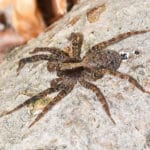You’ve likely heard the rumors: camel spiders are enormous, deadly creatures with a venomous bite. But before you swear off desert travel forever, let’s unravel the truth about these misunderstood arachnids.
Debunking the Venom Myth: What You Need to Know
Okay, let’s address the elephant (or rather, the spider) in the room. Camel spiders might look like they crawled out of a nightmare, but they’re not the venomous villains they’re often made out to be.
No Venom Here!
Here’s the thing: camel spiders don’t possess venom glands. That’s right, not a single drop. Those intimidating jaws? They’re all muscle, designed to grab, crush, and tear their prey. So, while a bite from these creatures can be quite painful, it won’t deliver a dose of poison.
Not Even Spiders?
The term “camel spider” is a bit of a misnomer. They aren’t true spiders at all! Instead, they belong to a fascinating group called Solifugae, which are more closely related to scorpions. And unlike spiders, which have specialized glands for producing venom, camel spiders rely on brute strength and digestive juices to subdue their meals.
Digestion, Not Destruction
Imagine a tiny, eight-legged blender. That’s essentially how camel spiders turn their prey into a meal. After capturing their victims with their powerful jaws, they use digestive enzymes to liquefy the flesh before consuming it. It’s a messy but effective way to eat!
Camel Spider Bites: Pain vs. Poison
So, we’ve established that camel spiders aren’t venomous. But what should you expect if you find yourself on the receiving end of their powerful jaws?
What Happens If You Get Bitten by a Camel Spider?
Let’s be real, a camel spider bite isn’t a walk in the park. Their jaws are incredibly strong, and a bite can be quite painful. Think of it as a very intense pinch. The pain comes from the force of the bite itself, not from any injected toxins.
The Real Risk: Infection
The primary concern with a camel spider bite is the potential for infection. Just like any wound, a bite can become a breeding ground for bacteria if not properly cared for.
First Aid Essentials:
If you are bitten by a camel spider, follow these steps:
- Cleanse the Bite: Wash the affected area thoroughly with soap and water to remove any dirt or debris.
- Antiseptic Application: Apply an antiseptic solution to the bite to further reduce the risk of infection.
- Keep It Covered: Protect the wound with a sterile bandage to prevent contamination.
- Monitor for Infection: Keep an eye on the bite site for signs of infection, such as increasing redness, swelling, pus, or red streaks radiating from the wound.
- Seek Medical Attention: If you experience any signs of infection, or if the pain is severe, consult a medical professional promptly.
Camel Spider Aggression: Untangling Myth From Reality
How Aggressive Are Camel Spiders?
Camel spiders have earned a reputation for being aggressive, even bloodthirsty, creatures. But the reality is far less frightening.
More Fearful Than Fearsome:
Camel spiders are not out to hunt humans. In fact, they tend to be more afraid of us than we are of them. They are shy creatures that would much rather avoid confrontation.
Defensive, Not Aggressive:
Bites typically occur when a camel spider feels threatened or cornered. They might bite to defend themselves if they feel there’s no escape route.
Common Myths, Debunked:
- Myth: Camel spiders chase humans.
Reality: They might follow your shadow seeking shade, but they aren’t chasing you down. - Myth: Camel spiders scream when they run.
Reality: They don’t have vocal cords, so they can’t scream. - Myth: Camel spiders can jump several feet in the air.
Reality: While they are fast, their jumping abilities are often exaggerated.
Respecting Boundaries: Can You Handle a Camel Spider?
Given their ferocious reputation, it’s natural to wonder if it’s safe to handle a camel spider.
Hands Off!
The short answer is: it’s best to admire them from afar. While they aren’t inherently aggressive, handling a camel spider could provoke a defensive bite.
Respect Their Space:
If you encounter a camel spider in the wild, give it a wide berth. Let it go about its business, and it will likely do the same for you.
Fascinating, Not Fearsome
Camel spiders might not be the cuddly critters of the arachnid world, but they are fascinating creatures that play an important role in their ecosystems. By understanding their behavior and respecting their boundaries, we can coexist peacefully with these often-misunderstood creatures.
Remember: While coyotes are adaptable and can adjust their activity patterns to suit their environment, they tend to be more active at night. On the other hand, wolf spiders are not inherently harmful; however, some species may exhibit defensive behaviors, such as biting, if they feel threatened. You can learn more about wolf spiders and their potential dangers by clicking the provided link.
- Amazing March Fun Facts: Unveiling History & Celebrations - April 15, 2025
- Master how to write height: A complete guide - April 15, 2025
- How High Are Your Standards Test: Find Your Perfect Match Now - April 15, 2025
















